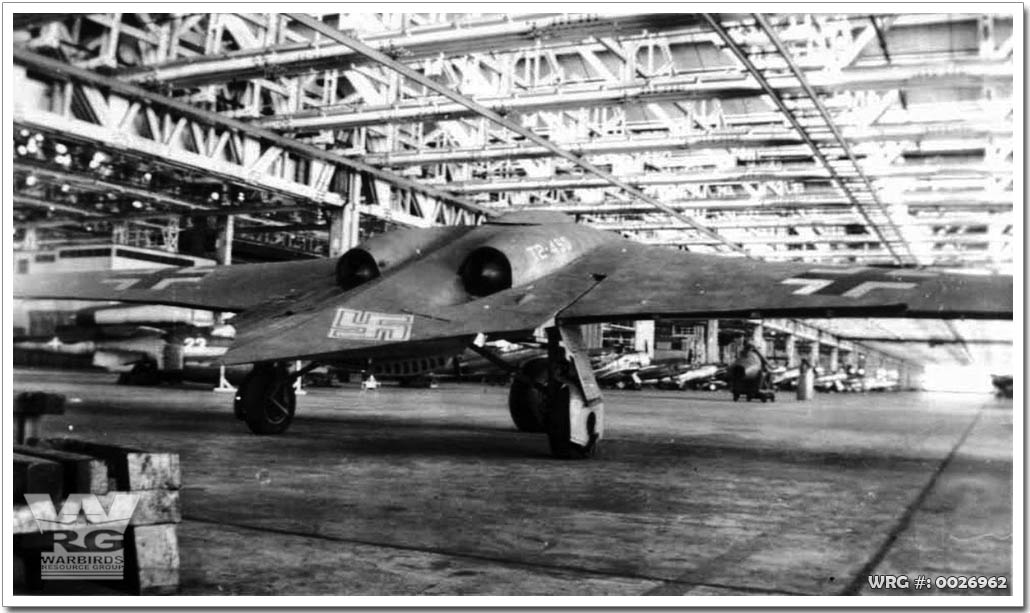LUFTWAFFE RESOURCE CENTER > SECRET PROJECTS & PROTOTYPES > Ho 229 > PREVIOUS PAGE
Operational History
The first prototype H.IX V1, an unpowered glider, flew on 1 March 1944. Flight results were very favorable, but there was an accident when the pilot attempted to land without first retracting an instrument-carrying pole extending from the aircraft. The design was taken from the Horten brothers and given to Gothaer Waggonfabrik. The Gotha team made some changes: They added a simple ejection seat, dramatically changed the undercarriage to enable a higher gross weight, changed the jet engine inlets, and added a system to carry cold air to cool the jet engine's outer casing, as the wing was made of wood.
The H.IX V1 was followed in December 1944 by the Junkers Jumo 004-powered second prototype H.IX V2; the BMW 003 engine was preferred, but unavailable. Göring believed in the design and ordered a production series of 40 aircraft from Gothaer Waggonfabrik with the RLM designation Ho 229, even though it had not yet taken to the air under jet power. The first flight of the H.IX V2 was made in Oranienburg on 2 February 1945. All subsequent test flights and development were done by Gothaer Waggonfabrik. By this time, the Horten brothers were working on the Amerika Bomber and did not attend the first test flight. The test pilot was Leutnant Erwin Ziller. Two further test flights were made between 2 and 18 February 1945. Another test pilot used in the evaluation was Heinz Scheidhauer.
The H.IX V2 reportedly displayed very good handling qualities, with only moderate lateral instability (a typical deficiency of tailless aircraft). While the second flight was equally successful, the undercarriage was damaged by a heavy landing caused by Ziller deploying the brake parachute too early during his landing approach. There are reports that during one of these test flights, the H.IX V2 undertook a simulated "dog-fight" with a Messerschmitt Me 262, the first operational jet fighter and that the H.IX V2 outperformed the Me 262.

Horton Ho 229 prototype (probably V2) preparing for test flight
[Source: Unknown]
Despite this setback, the project continued with sustained energy. On 12 March 1945, the Ho 229 was included in the Jäger-Notprogramm for accelerated production of inexpensive "wonder weapons". The prototype workshop was moved to the Gothaer Waggonfabrik (Gotha) in Friedrichroda. In the same month, work commenced on the third prototype, the Ho 229 V3. The V3 was larger than previous prototypes, the shape being modified in various areas, and it was meant to be a template for the pre-production series Ho 229 A-0 day fighters, of which 20 machines had been ordered. V3 was powered by two Jumo 004C engines, and could carry two MK 108 30mm cannon in the wing roots. Work had also started on the two-seat Ho 229 V4 and Ho 229 V5 night-fighter prototypes, the Ho 229 V6 armament test prototype, and the Ho 229 V7 two-seat trainer.

A Ho 229 V3 after capture. Incomplete. FE-490
[Source: Unknown]
Sources:
Wikipedia - Horton Ho 229
LUFTWAFFE RESOURCE CENTER > SECRET PROJECTS & PROTOTYPES > Ho 229 > PREVIOUS PAGE
